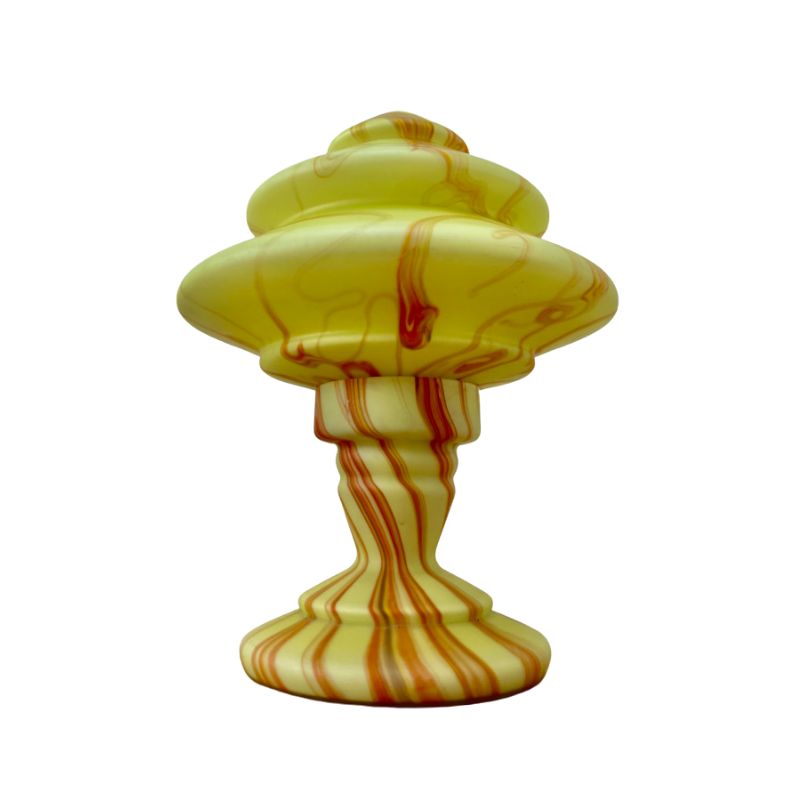Hi all,
What kind of glue was originally used by the Danish cabinetmakers for staving teak? It is black (look closely in the seams and you will see a black line), as opposed to all the white glues I am accustomed to using for woodworking. It also does not display any glue creep.
Thanks!
high quality wood glue...
A high quality wood glue which is a tan yellowy color when wet is used mostly by experienced wood workers. The wet glue dries to a neutral tone which looks clear when properly used with vice clamps.
The dark appearance of the joints borders are more to do with grain contrast and oxidation.
Color is in the glue
The dark color is really in the glue. I've had two solid teak pieces (from different makers, if that means anything), where a tongue and groove staved joint failed, and both had glue residue that was ~1/32 of an inch thick that had to be removed. Gently sliding a chisel along the joint encouraged the glue to pop off in chips. And the chips were very dark in color.
I think the resorcinol suggestion might be right. I will have to see if I can find a chip of glue, and examine it closely to see if it is a really dark red. Maybe age or oiling darkened the resorcinol.
Titebond
Obviously it's not the original article, but Titebond makes a tinted glue.
http://www.titebond.com/product.aspx?id=0d8d5e20-0660-45f6-a61e-69ada5b8...
Urea-formaldehyde
The brittleness sounds right. I've never used it, but I thought resorcinol had poor gap-filling performance. A too thick glue line might explain a premature failure.
Teak has always had a reputation for being difficult to glue due to its natural waxy resins. It may be that something else entirely was commonly used. I really don't know.
I think urea-formaldehyde glues may still be used in exterior-grade plywoods and often those glue lines appear almost black.
.
yup I think UF too, its a dark brown (the powder half is tan and when you add the liquid it goes even darker) that with a coat of finish comes close to black, its still popular here and is actually a really good glue functionally but has some drawbacks.
There was a type I used to use that was marketed as being flexible, it was great for curved plywood and anything oily.
In the mid-90's I took up...
In the mid-90's I took up the hobby of making split-cane bamboo fly fishing rods. A lot of literature on the craft comes from the 50's and 60's, and the only glues I can recall being mentioned at that time are hide glue, Resorcinol and Urac-185 (urea-formaldehyde). As tktoo said, Resorcinol leaves a dark red glue line where pieces are laminated together (these are the thin dark horizontal lines seen in the first image). Seen in person, these lines generally look black to me. Some people like the appearance of these dark glue lines on a fly rod, since it is a traditional look. If you did not prefer seeing these glue lines, you could instead use urea-formaldehyde glue, which is what is used in the second image, which shows no glue lines, as the glue is a light tan color that matches the color of the bamboo. I imagine it is possible to add pigment to either glue, to darken or alter the color.
These days many split-cane rodmakers use epoxies.
.
Yeah I remember reading the catalogue and it said you could order pigments, I must have just got dark tan as the default.
Btw is the new google image search driving anyone else around the bend? The preview looks like a full page so I click the back button and then have to go forward again, lifes hard huh? But I KEEP fucking doing it like an idiot.
I saw
a video (on "How It's Made) showing the procedures for bamboo fly rods. I still don't understand how the six segments of bamboo are so precisely milled to the correct dimension and taper. Amazing . . .
http://www.djmarks.com/pdf/ureaglue.pdf
Nice work, tchp.
I knew next to nothing about fly rods until I worked on a museum exhibition featuring pieces from the Orvis collection. Some of those old rods and reels blew me away with the level of craftsmanship involved. The Hardy Bros. stuff featuring agate inlays from the early part of the last century in particular.
SDR, some of those old rods are actually twelve individual pieces of bamboo wrapped in concentric layers around a tapered steel rod - full length!
If you need any help, please contact us at – info@designaddict.com









